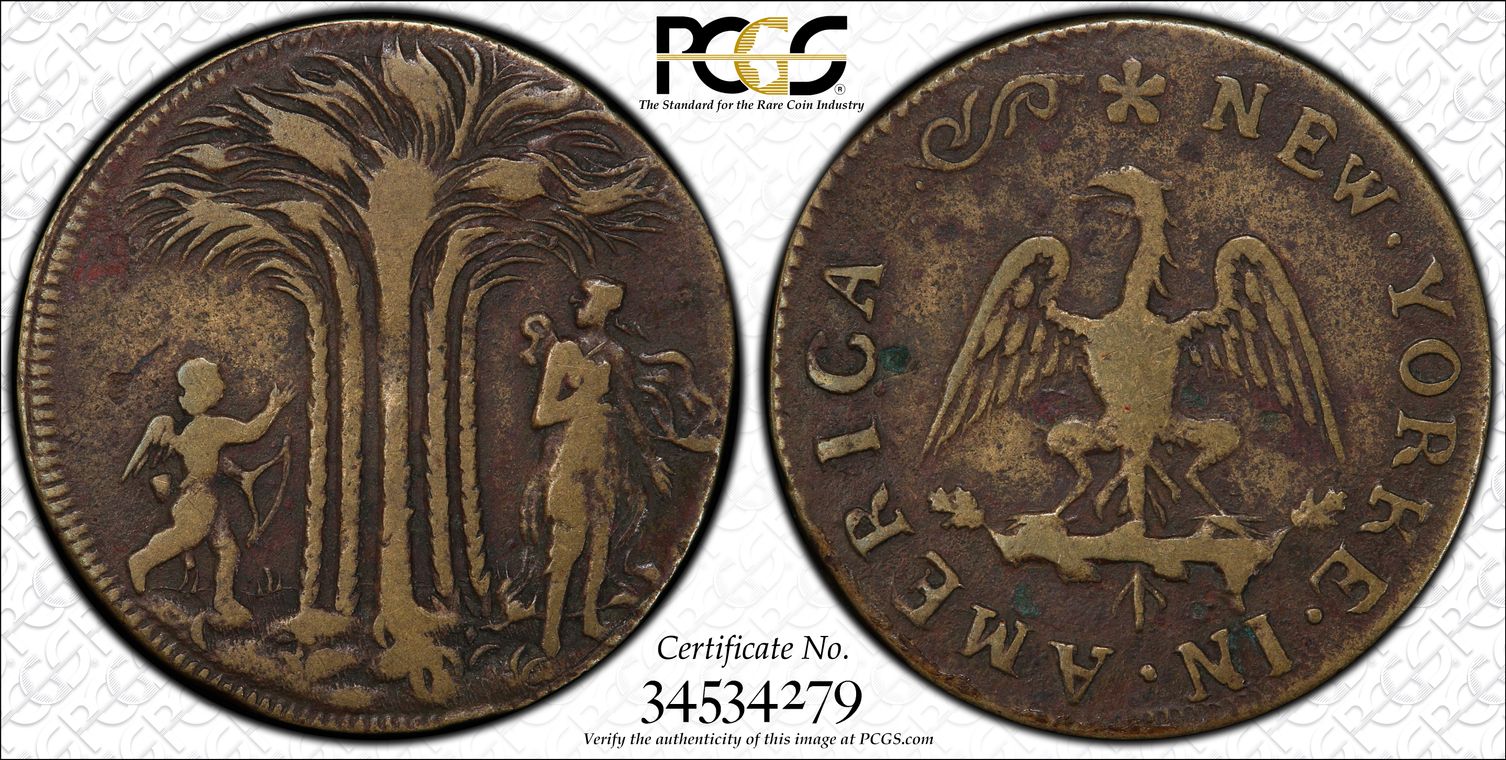(ca. 1670) Token New Yorke in America Brass VF20 认证号34534279, PCGS号226
专家评论
Ron Guth
The New Yorke Token is a small piece, usually made of brass, that experts believe was struck sometime in the late 1600's (1670 is a date that is often offered). This token is so popular that it was ranked 25th in the "100 Greatest American Medals and Tokens" book.
Most examples are in relatively poor condition, often pitted from corrosion, or on defective planchets. No Mint State examples are known. The finest example is the PCGS AU55, a formerly unknown example that burst onto the numismatic scene in 2016
This token represented the first time that the words "New Yorke" appeared on any coin.
The 1991 ANS Proceedings publication Money of Pre-Federal America contains an excellent study of the New Yorke Token by John Kleeburg, where he listed 20 examples that either appeared at public auction or were in institutional collections. Based on similarities between the eagle on the coin and the crest of New York Governor Francis Lovelace, Kleeburg proposes that these coins were made sometime between 1668 and 1673.
From "The Early Coins of America" by Sylvester S. Crosby --
"The first of these is called the New Yorke Token, and has until quite recently been considered unique, but within three years, three new specimens have been discovered; two of these are owned in Boston, Mr. Appleton having one in lead, and Mr. Parmelee one in brass. The other specimen is in lead, but its present ownership is unknown to us. The only specimen in lead accessible to us is so much corroded as to furnish no satisfactory basis for ascertaining its original weight.
PCGS #
226
直径
0.00 毫米
重量
0.00 克
铸币数量
0
金属成分
Other
更高评级数量
5
评级较低的钱币数量
4
地区
The United States of America
价格指南
PCGS 数量报告
拍卖 - PCGS 评级的
拍卖 - NGC 评级的























